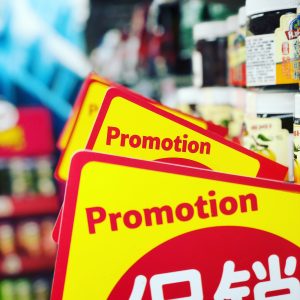12 Introducing the “Sports Marketing Mix”
Learning Objectives
- Identify and evaluate the role of product in sports marketing, including product development, branding, and packaging strategies.
- Examine the significance of pricing in sports marketing, including the various pricing strategies used in the industry.
- Understand the importance of promotion in sports marketing, including the use of traditional and digital media, sponsorships, and endorsements.
- Analyse the importance of place in sports marketing, including the physical and online location of products and services.
Introduction
Congratulations!
We’ve made it to the final week of content for this unit. This week is where we bring everything together and provide you with a comprehensive approach to executing your sports marketing plan. By the end of this week, you will have a solid understanding of the marketing mix and how it can be applied to the sports industry. So, let’s get ready to wrap up this unit on a high note and equip ourselves with the necessary knowledge to excel in our sport marketing proposal.
I know that introducing a typology at the end of a semester might seem out of place, but trust me, it’s worth it. To truly grasp the concept of the sports marketing mix, it’s crucial to have a comprehensive understanding of each element individually. By looking back at all the weeks and reflecting on what we’ve learned, we can now connect the dots and see how each element works together to form a cohesive strategy.
It’s important to note that while the marketing mix has become a go-to framework in the sports industry for developing and implementing marketing strategies, it’s not a one-size-fits-all solution. Other marketing experts and scholars have also contributed to its evolution and refinement over time, bringing new perspectives and insights to the field[1][2][3].
To keep things simple (you’re welcome!) we are using the framework as outlined by Schwarz and Hunter (2017), drawn from their textbook “Advanced Theory and Practice in the Sports Industry[4]
So, let’s dive into this concept and see how we can use it to excel in the dynamic world of sports marketing!
The 4 P’s (applied to sports marketing)
Product
This refers to the sports product or service being offered to consumers. This includes various sports-related items such as teams, athletes, events, merchandise, and other sports-related services. Seems simple enough but when we delve into this aspect of the sports marketing mix what is revealed is that the notion of a “sports product” is very complex.
Armstrong and his colleagues are prominent marketing academics who argue in their textbook “Principles of Marketing” that “product” encompasses multiple dimensions[5]. By incorporating the concepts of core product, actual product, and augmented product, we can gain a better understanding of product within the context of sports marketing mix.
The core product is the fundamental benefit or experience that the customer is seeking when they purchase a product or service. This could be the thrill of watching a live game or the sense of accomplishment and camaraderie that comes from participating in a sporting event. This is the primary reason why fans/customers are interested in the product or service and is what sets it apart from other options in the marketplace[6]
The actual product, on the other hand, is the tangible item or service that the customer receives as a result of their purchase. This could include physical products such as game tickets, team merchandise, or sports equipment, or services such as sports coaching, training programs, or access to fitness facilities. These are the tangible things that customers receive and can physically use or interact with[7].
Finally, the augmented product includes any additional features or services that go beyond the core and actual products and provide added value to the fans/customers. This could include VIP seating, access to pre-game activities or post-game events, exclusive merchandise or experiences, or personalised coaching or training programs. These are the extras that make the product or service more desirable and valuable to customers and can help differentiate it from competitors in the marketplace[8]
Price
This refers to the monetary value placed on sports products or services. Factors such as the cost of production, the level of competition, and the perceived value of the product or service can influence pricing decisions.
As we have previously explored, price is the way in which customers assess the value of a product or service, and it strongly influences their decision-making when choosing between competing brand. In fact, effective pricing can be a powerful tool for business success. While many people see pricing as something beyond their control, it can actually be managed effectively – and needs to be in the context of sport!
The revenue of a sports organisation is heavily influenced by pricing decisions. However, traditional approaches to pricing may not be suitable for all sport teams (which vary across codes). Due to the unique characteristics of fans/customer perceptions, sports organisations must carefully consider pricing decisions to ensure they reflect the true value of their offerings[9].

Sports franchises have a long history of utilising price discrimination techniques to their advantage. One such strategy is offering bundled tickets, volume discounts, fully loaded tickets, giveaway days, and two-part tariffs to customers.
Furthermore, modern sports stadiums tend to offer more diverse pricing options and a wider range of seating sections to cater to varying price points. For instance, if we compare the pricing and seating arrangements of corporate venues at Commbank Stadium to that of a suburban sports ground (like Belmore Oval or Kogarah Stadium), we can observe significant differences in their tiered ticketing structures[10].
Interestingly, teams with a higher level of uncertainty in their demand, as indicated by a greater standard deviation in their past winning records, typically provide more pricing options, which can ultimately increase their profitability.
However, setting pricing strategies for a new club can be a complex thing to do- have a read of the following article on the ROAR titled: The A-Leagues great membership price divide[11] to compare the cost of memberships for different teams within the same league.
Something to think about when reading this article is do you think that sports teams should be able to set their own ticket prices or should there be a one price fits all for general admission?
Allowing sports teams to set their own ticket prices provides them with the flexibility to adjust prices based on market demand and other factors. This can help teams maximise revenue and ensure that they are able to cover their costs. On the other hand, a one-price-fits-all approach for general admission may be more equitable and ensure that everyone has equal access to sporting events, regardless of their ability to pay.
Lovelock et al. (2009) framework for pricing objectives in service organisations provides a useful approach for sports marketing professionals to consider when developing pricing strategies[12].
To test your understanding of the pricing objectives framework proposed by Lovelock et al. (2009) you can apply this approach to various examples within the context of sports. By doing so, you can gain a deeper understanding of how each pricing objective can be utilised in real-life situations and how they can impact revenue generation, customer loyalty, and capacity utilisation – have a go below.
Promotion
This involves the various tactics used to promote and advertise sports products or services. We have covered this topic quite extensively in this textbook, but here is a bit of a recap.
Throughout this Pressbook we have explored how promotion plays a critical role in sports marketing, as it helps to raise awareness, spark interest, and generate excitement for a particular sports event, team, or product.

We have explored various examples of successful promotion strategies and understood how they are essential for sports marketers to reach their intended audience and achieve their marketing goals. We unpacked how marketers use a variety of methods such as advertising, public relations, social media marketing, sponsorship, direct marketing, experiential marketing, and content marketing.
Basically, effective promotion in sports marketing necessitates an in-depth understanding of the target audience, and the capacity to create compelling messages and experiences that resonate with them. A well-rounded promotion strategy that utilises multiple channels (omnichanel marketing) to reach fans and customers is also essential.
Place
This refers to the channels through which sports products or services are made available to consumers. This includes physical locations such as sports stadiums, retail stores, and online environments.
I found an interesting article called “Increasing the Focus on ‘Place’ in the Marketing Mix for Facility Dependent Sport Services” by Hans Westerbeek and David Shilbury, which was published in 1999 which aims to draw attention to the importance of the “place” element in the marketing mix of facility-dependent sports services[13].
The authors argue that while most sports organisations prioritise product, price, and promotion when developing their marketing strategies, place is often overlooked. They suggest that place is a crucial factor in the success of sports organisations, as it can significantly affect consumer behaviour and their overall experience.

But why?
The article talks about how sports organisations can create an effective marketing strategy by focusing on “place,” which refers to the location where sports services are provided. The authors provide a framework that includes four essential elements: location, accessibility, atmosphere, and design[14].
They explain that a sports facility’s location can significantly impact its success and that accessibility is also important in attracting customers from a wide geographic area. The authors suggest that creating a positive atmosphere through factors like music and lighting can enhance the customer experience and encourage repeat business.
They also assert that design is an essential aspect of place marketing and can help differentiate a facility from competitors and make it more appealing to customers[15].
What I like most about this reading is that the authors also note that place is not only important in the offline world, but also in the online world. They argue that the concept of place extends beyond the physical location of a facility and includes its virtual presence, such as its website and social media pages. In the online world (just like in the outside world) a sports organisation’s virtual presence serves as its place, and its design, accessibility, and atmosphere play a crucial role in attracting and retaining customers[16].
Putting them all together
Marketing is an essential aspect of sports organisations in Australia, with the industry constantly evolving and becoming more competitive. The 4 Ps of marketing – product, price, promotion, and place – provide a framework for sports marketers to develop effective strategies to attract and retain customers. In the Australian context, sports organisations need to be creative in their marketing efforts to stand out from the crowd, particularly with the country’s love for sports.
Watch this video which further summarises all four and puts them together for a more holistic understanding of the sports marketing mix[17]
That’s all folks …
As the author of this Pressbook I would like to express my appreciation for your hard work and commitment this semester. I hope you found my book to be a valuable resource in guiding your understanding and discussions of the key concepts and practices in the field.
It is always my goal to provide students with a comprehensive and engaging guide to the subject matter, and I hope that my book has contributed to your overall learning experience.
I hope that the knowledge and skills you have gained from this unit will be useful in your future studies or career endeavours.
Sport Marketing really is an exciting and dynamic field that requires continuous learning, and I encourage you to keep exploring and expanding your knowledge.
Media Attributions
- Matic, RM, Maksimovic, N, Vukovic, J, Corilic, D, Bujkovic, R & Jaksic, D 2019, 'Marketing mix in team sports in Serbia', Journal of Anthropology of Sport and Physical Education, vol. 3, no. 3, pp. 3-10. ↵
- Fetchko, MJ, Roy, DP & Clow, KE 2018, Sports marketing, Routledge, London. ↵
- Reihani, E & Khatibzadeh, M 2021, 'Marketing mix in sport tourism context', Journal of New Studies in Sport Management, vol. 2, no. 3, pp. 247-55. ↵
- Schwarz, EC & Hunter, JD 2017, Advanced theory and practice in sport marketing, Routledge, London. ↵
- Armstrong, G, Adam, S, Denize, S & Kotler, P 2014, Principles of marketing, 6th Australian edn, Pearson Australia, Melbourne, Vic. ↵
- Armstrong, G, Adam, S, Denize, S & Kotler, P 2014, Principles of marketing, 6th Australian edn, Pearson Australia, Melbourne, Vic., p. 206. ↵
- Armstrong, G, Adam, S, Denize, S & Kotler, P 2014, Principles of marketing, 6th Australian edn, Pearson Australia, Melbourne, Vic., p. 206. ↵
- Armstrong, G, Adam, S, Denize, S & Kotler, P 2014, Principles of marketing, 6th Australian edn, Pearson Australia, Melbourne, Vic., p. 206. ↵
- Drayer, J & Rascher, DA 2013, 'Sport pricing research: Past, present, and future', Sport Marketing Quarterly, vol. 22, no. 3, pp. 123-8. ↵
- Drayer, J & Rascher, DA 2013, 'Sport pricing research: Past, present, and future', Sport Marketing Quarterly, vol. 22, no. 3, pp. 123-8. ↵
- The Roar 2022, The A-Leagues great membership price divide, 6 September, <https://www.theroar.com.au/2022/09/07/the-a-leagues-great-membership-price-divide/>. ↵
- Lovelock, C, Wirtz, J & Chatterjee, J 2009, Services marketing, 5th edn, Pearson Education, New Delhi, pp. 143-4. ↵
- Westerbeek, HM & Shilbury, D 1999, 'Increasing the focus on “place” in the marketing mix for facility dependent sport services', Sport Management Review, vol. 2, no. 1, pp. 1-23. ↵
- Westerbeek, HM & Shilbury, D 1999, 'Increasing the focus on “place” in the marketing mix for facility dependent sport services', Sport Management Review, vol. 2, no. 1, pp. 1-23. ↵
- Westerbeek, HM & Shilbury, D 1999, 'Increasing the focus on “place” in the marketing mix for facility dependent sport services', Sport Management Review, vol. 2, no. 1, pp. 1-23. ↵
- Westerbeek, HM & Shilbury, D 1999, 'Increasing the focus on “place” in the marketing mix for facility dependent sport services', Sport Management Review, vol. 2, no. 1, pp. 1-23. ↵
- Burner, J 2020, Sports Marketing Unit 1: Module 1.2 Marketing Mix, online video, <https://www.youtube.com/watch?v=IMih38-9yEM>. ↵

